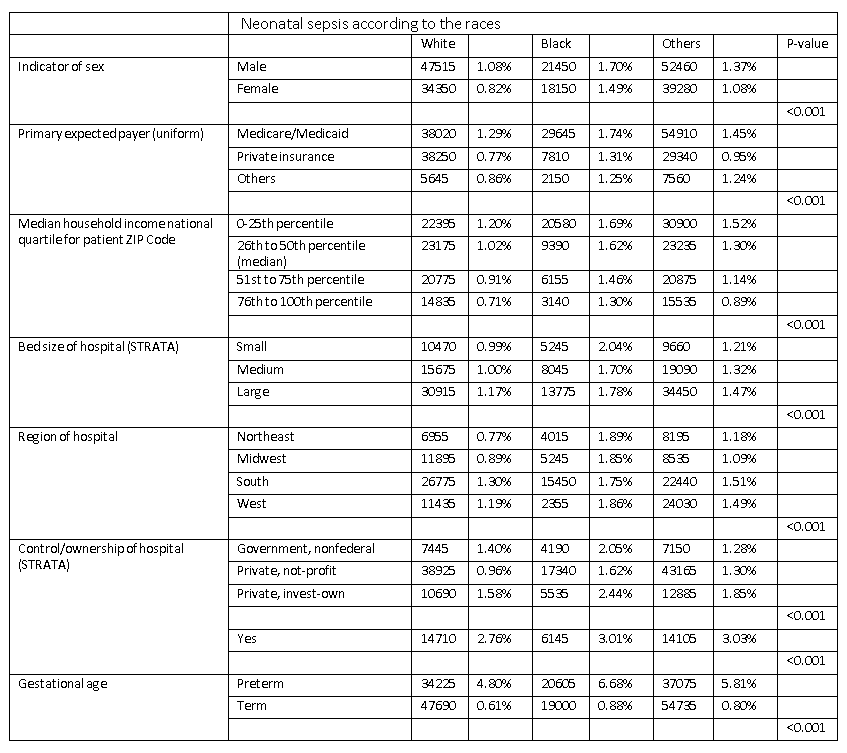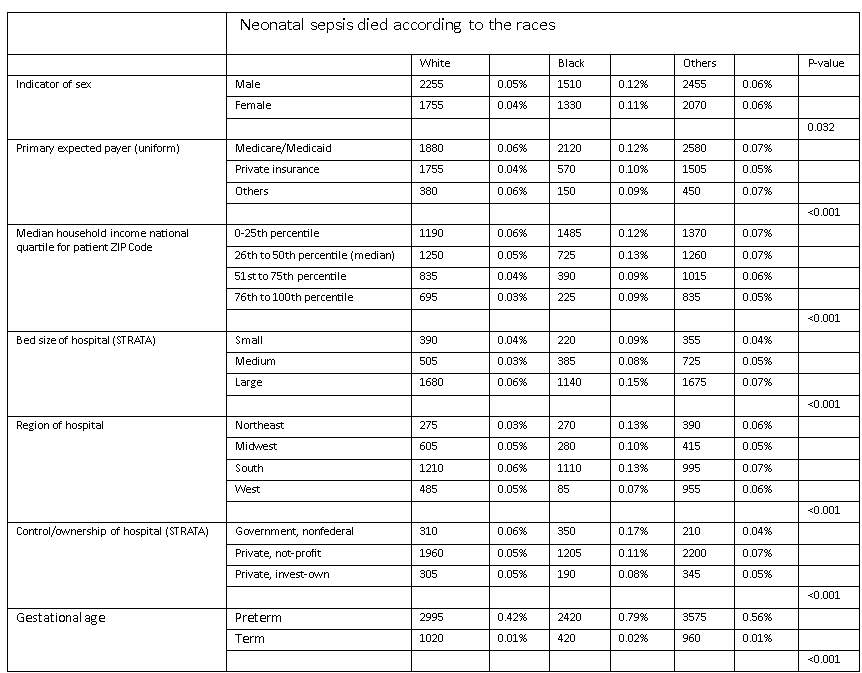Critical Care
Session: Critical Care 1
114 - Racial Disparities in Neonatal Sepsis and Sepsis-Related Mortality: A National Study
Monday, May 6, 2024
9:30 AM - 11:30 AM ET
Poster Number: 114
Publication Number: 114.2842
Publication Number: 114.2842

ibrahim Qattea, MD (he/him/his)
Fellow
Nassau University Medical Center
East Meadow, New York, United States
Presenting Author(s)
Background: Neonatal sepsis is a critical concern in healthcare, impacting newborns' well-being and survival. Emerging evidence suggests that racial disparities exist in the overall outcomes of neonatal illnesses. However, there is unmet need to address the association of race and sepsis-related mortality.
Objective: To assess the prevalence of sepsis and sepsis-related mortality among various racial groups, including White, Black, and Others, within the context of pertinent demographic and healthcare factors.
Design/Methods: We utilized the de-identified national inpatient sample dataset from the Healthcare Cost and Utilization Project (HCUP) from the Agency for Healthcare Research and Quality (AHRQ) for the years 2016-2020. We collected information on all in-patient newborns ( < 28 days) diagnosed with sepsis. Mortalities were identified, and sepsis-related mortality rates were calculated. Demographic data were collected including race, sex, primary expected payer, median household income quartile for patient ZIP code, hospital bed size, hospital region, and control/ownership of the hospital. We employed rigorous statistical analysis methods to assess the association between race and neonatal sepsis incidence and mortality. Chi-square tests and logistic regression models were used to examine the impact of demographic and healthcare variables on these disparities.
Results: The study included 18,909,795 newborns of them 213204 (1.13%) were diagnosed with neonatal sepsis and 11375(0.06%) died with the diagnosis of sepsis.
The prevalence of neonatal sepsis was significantly higher in Black than white and in males than females, with rates of 1.70% in Black males, 1.49% in Black females, 1.08% in white males and 0.82% in white females.
Among males, sepsis-related mortality rates were 0.05% for White and 0.12% for Black. Among females, sepsis-related mortality rates were 0.04% for White and 0.11% for Black. (p= 0.032). Racial disparity has been consistent through the study years (Figure 1). Several other demographic factors were significantly associated with sepsis and mortality. Table 1
Conclusion(s): This study demonstrates clear racial disparities in neonatal sepsis and sepsis-related mortality, particularly the elevated rates among black infants, are a pressing concern. These findings emphasize the urgency of addressing healthcare inequalities, providing equitable access to care, and implementing interventions tailored to reduce neonatal sepsis incidence in all communities.


.png)
